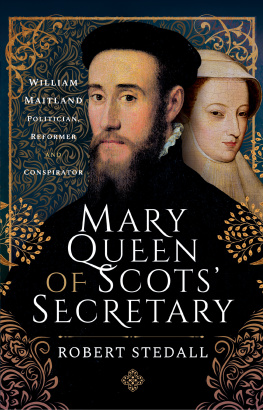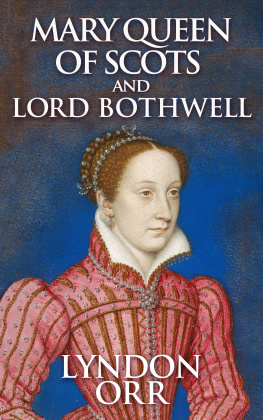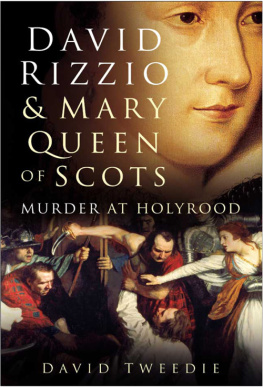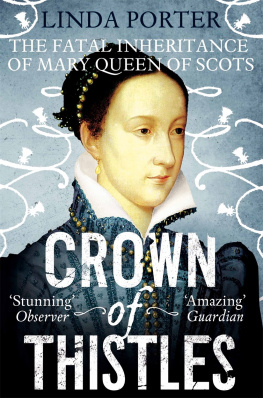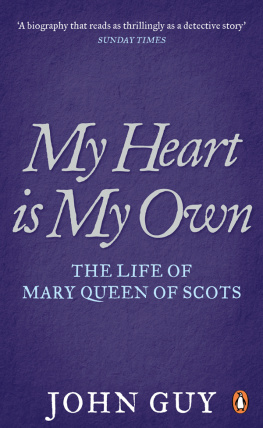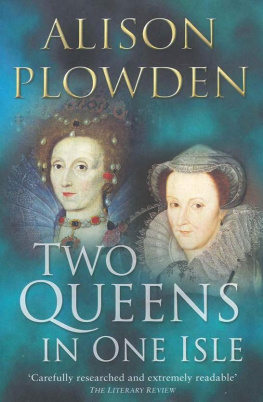Pagebreaks of the print version

MARY QUEEN OF SCOTS SECRETARY
SECRETARY
MARY QUEEN OF SCOTS SECRETARY
SECRETARY
WILLIAM MAITLAND
POLITICIAN, REFORMER AND CONSPIRATOR
ROBERT STEDALL
First published in Great Britain in 2021 by
PEN AND SWORD HISTORY
An imprint of
Pen & Sword Books Ltd
Yorkshire Philadelphia
Copyright Robert Stedall, 2021
ISBN 978 1 52678 779 8
eISBN 978 1 52678 780 4
Mobi ISBN 978 1 52678 781 1
The right of Robert Stedall to be identified as Author of this work has been asserted by him in accordance with the Copyright, Designs and Patents Act 1988.
A CIP catalogue record for this book is available from the British Library.
All rights reserved. No part of this book may be reproduced or transmitted in any form or by any means, electronic or mechanical including photocopying, recording or by any information storage and retrieval system, without permission from the Publisher in writing.
Pen & Sword Books Limited incorporates the imprints of Atlas, Archaeology, Aviation, Discovery, Family History, Fiction, History, Maritime, Military, Military Classics, Politics, Select, Transport, True Crime, Air World, Frontline Publishing, Leo Cooper, Remember When, Seaforth Publishing, The Praetorian Press, Wharncliffe Local History, Wharncliffe Transport, Wharncliffe True Crime and White Owl.
For a complete list of Pen & Sword titles please contact
PEN & SWORD BOOKS LIMITED
47 Church Street, Barnsley, South Yorkshire, S70 2AS, England
E-mail:
Website: www.pen-and-sword.co.uk
Or
PEN AND SWORD BOOKS
1950 Lawrence Rd, Havertown, PA 19083, USA
E-mail:
Website: www.penandswordbooks.com
List of Illustrations
Front cover
William Maitland of Lethington, Marys Secretary of State, whose doubtful loyalty caused him to be dubbed the chameleon by George Buchanan. (Oil on panel / Lennoxlove House Limited / scran.ac.uk / 000-000-027-976-R)
Picture section
Also by the same author
Hunting from Hampstead: The Story of Henry and Lucy Stedall and their Children (Book Guild Publishing, 2002)
A two-volume history of Mary Queen of Scots:
The Challenge to the Crown, Volume I: The Struggle for Influence in the Reign of Mary Queen of Scots 15421567 (Book Guild Publishing, 2012)
The Survival of the Crown, Volume II: The Return to Authority of the Scottish Crown Following Mary Queen of Scots Deposition from the Throne (Book Guild Publishing, 2014)
Men of Substance: The London Livery Companies Reluctant Part in the Plantation of Ulster (Austin Macauley Publishers, 2016)
Mary Queen of Scots Downfall: The Life and Murder of Henry, Lord Darnley (Pen & Sword Books Limited, 2017)
The Roots of Irelands Troubles (Pen & Sword Books Limited, 2019)
Elizabeth Is Secret Lover: Robert Dudley, Earl of Leicester (Pen & Sword Books Limited, 2020)
Website : www.maryqueenofscots.net
Introduction
My initial interest in the period of Mary Queen of Scots arose out of research that I was undertaking on my wifes grandmothers family, the Erskines of Mar. With the Earls of Mar having served Mary Queen of Scots and being responsible for the upbringing of James VI, I was magnetically drawn to her story with the murders of David Riccio and her husband, Henry, Lord Darnley. I thus embarked on her biography, initially viewing it from the point of view of the Scottish nobility. The more I researched, the more I realised that there was no consensus about who was involved in the murders and of the part that Mary played in them.
There is, of course, a huge literature on this well-trodden subject. More recent scholarly studies by Lady Antonia Fraser, John Guy and Alison Weir, for example, paint Mary as an innocent in the midst of intrigue, let down by those who might have helped her, and debased by politically motivated propaganda. They portray her as a Catholic martyr (as she wished her audience at Fotheringhay to believe), unfairly condemned both in her lifetime and by history. Their view is not shared by Dr Jenny Wormald, Roderick Graham or Susan Doran, who see Darnleys murder as a political necessity, in which Mary was involved. To each of these eminent historians I owe a debt of gratitude for their scholarship, but the more I have researched, the less convinced I have become of the conclusions that they reached. I then developed a hypothesis, based on all the plausible evidence, to conclude that the murders involved a conspiracy developed by Maitland, Moray and Cecil to depose Mary, as a Catholic, from the Scottish throne and to prevent her from succeeding Elizabeth in England. This resulted in my two-volume history of Mary Queen of Scots and of James VI until he inherited the English throne in 1603, published by the Book Guild in 2012 and 2014.
I was then approached by Pen & Sword History to write a biography of Darnley, which was published in 2017. This involved more research on him, particularly on the period prior to his arrival in Scotland, and it tested my hypothesis using a different central character. It was with this mindset that I approached Pen & Sword History to write this biography of William Maitland of Lethington, who has always stood out as being a profound influence over the murder plots, but seemingly changing his loyalties as his career unfolded. There has not been a full-length biography published on Maitland for more than one hundred years, although John Skelton wrote a three-volume history in 18879 and E. Russell wrote another in 1912, which largely supersedes Skeltons magnum opus. There is also a huge thesis, The career of William Maitland of Lethington , written by Mark Loughlin for his Ph.D. at the University of Edinburgh in 1991, which is available online. This has broken new ground in researching Maitlands life, with copious quotations in contemporary Scots. While this makes reading it quite challenging, it provides an invaluable source of original material, painstakingly put together.
Despite his later support for Mary Queen of Scots, I now see Maitland as being closer to the heart of the conspiracy causing her undoing than I had previously envisaged. This only reconfirms the hypothesis that I have developed.
Robert Stedall, January 2021
Preface
By far the most able but enigmatic of the personalities surrounding Mary Queen of Scots during her personal rule in Scotland was her Secretary of State, William Maitland of Lethington. He had also been the trusted Secretary of her mother, Mary of Guise, during her time as regent. He was a man of charm and academic stature, but his changes of loyalty caused him to face mistrust.
Maitland was a man of the Renaissance. Having travelled extensively in Europe as part of his impeccable education, he was far-sighted and politically brilliant. After studying the new religious doctrines being developed on the Continent, it was he who recognised that consolidating Scotlands Reformation would depend on breaking the Auld Alliance with Catholic France. He also worried that the Scottish government was being dominated by French officialdom rather than its traditional aristocracy. As soon as Elizabeth had established authority on the English throne and could admit to her Protestant affiliation, Maitland steered Scotland towards amity with its erstwhile bitter enemy to provide mutual protection from Continental Catholic superpowers. His approach was welcomed by William Cecil, Elizabeths Secretary of State. They had much in common and became close friends, so that Cecil did all he could to support him.

